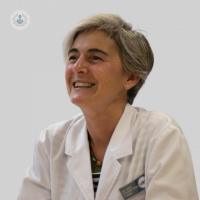FIV: ¿cuántos intentos son recomendables?
Written by:In vitro fertilization (IVF) is the best Assisted Reproduction treatment available, using the patient's own eggs. However, this does not mean that you get pregnancy at first.
IVF pregnancy rate
The pregnancy rate per attempt will depend on the woman's age, but around 40%, so it is normal to have to repeat the process. The number of attempts is usually recommended is 3, since, after this number of IVF, 85% of couples get pregnant. However, it must be taken into account that there are personal parameters of each couple or woman that can make this recommendation alter, advising to perform more or less cycles of IVF before moving to alternative treatments such as egg donation:
- Age of patient : oocyte quality worsens as age advances. In patients over 40 years of age, it is estimated that around 80% of the embryos obtained with their eggs can have chromosomal alterations and, therefore, will not give rise to a term pregnancy. It is necessary to have 9 or 10 evolutionary embryos so that one of them produces a pregnancy. This could lead to more IVF attempts, but the passage of time in performing them plays against getting pregnant. Unfortunately, in these patients it is common to recommend the passage to ovodonation earlier than in younger patients.

- Oocyte reserve and response to previous treatments: the probability of pregnancy with IVF is linked to the reserve of ova of the woman. In patients with a very low oocyte reserve and / or who have responded with a very low number of follicles and oocytes to ovarian stimulation, the probability of pregnancy per cycle will be less than normal. In these cases a low number of embryos is obtained from which to choose the best one to transfer, thus limiting the probability of pregnancy. Occasionally, if the woman with low reserve is young she may have a good oocyte and embryonic quality, as well as a better prognosis of the usual in low reserve women. In these cases, it may be worth insisting on the repetition of IVF cycles.
- Embryonic quality in previous treatments: the evolution of the embryos during the crop and their morphological quality give us information on the quality of the gametes (oocyte and spermatozoa) from which they come. The oocyte plays a crucial role during the first 3 days of embryo development, while sperm quality can be reflected from the 4th day of embryonic development. It is possible, therefore, that after an IVF with embryonic long blastocyst culture we can evaluate the suitability of changing the eggs or sperm in future cycles and thus improve the prognosis of pregnancy, without having reached the usual 3 cycles of IVF.
- Chromosomal abnormalities in embryos : In cases where preimplantation genetic diagnosis (PGD) has been made in the embryos of previous cycles, the percentage of embryos with chromosomal abnormalities obtained will give us an idea of what can happen again if we repeat another cycle of FIV.
- Desire of the patients : although the last name, probably the most important. Turning from IVF to ovodonation does not only mean changing the type of treatment, but rather renouncing the genetics of women, and this has very large implications from the emotional point of view. Not all patients or couples are prepared to take this step at the same time. For this reason, it is critical that physicians give objective information to the couple about their prognosis and pregnancy probability with each of the treatments so that they can make the most appropriate decision for them.
In URH García del Real we individualized the recommendation for each patient or couple. In our daily clinical sessions we analyzed each cycle of IVF performed. The review from a clinical and laboratory point of view allows us to evaluate the outcome of each phase of the treatment and thus to be able to transmit to patients this information together with our recommendation on the following steps or treatments to follow.
We are convinced that this detailed and personalized analysis contributes to offer high success rates, which are above the European and Spanish average.



